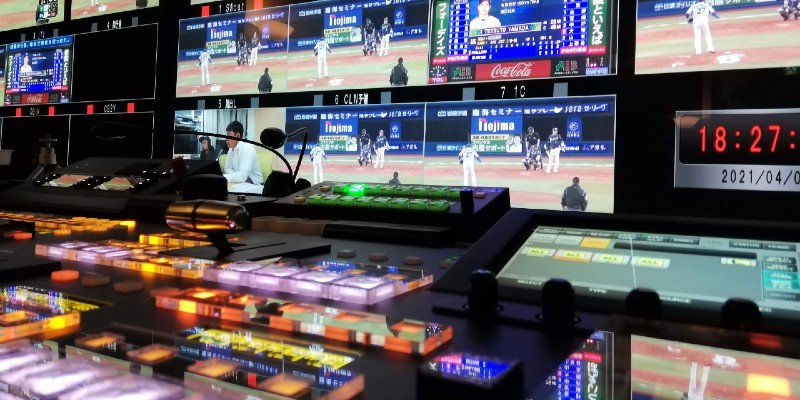Perspective
Remote production – What can broadcast teach sport?

While sport across India has had an enforced break as the country focused on its continued response to the pandemic, the broadcast sector has remained active throughout. Broadcasters have increasingly had to adapt to solve some of the financial as well as the health and safety challenges brought by COVID-19. TV crews, talk show hosts, and other personalities continued to use IP technology for round-the-clock reporting and productions from remote locations, including from studios set-up in their own homes.
India’s record medal tally at the Tokyo Summer Games gave sports fans a much-needed boost and, following its postponement earlier this year, the IPL’s anticipated return represents another major milestone for sport.
As sport slowly prepares to restart, what can it learn from how the broadcast industry has adapted over the past year?
Getting more for less from remote production
Dynamics in the broadcast sector in India are changing. Smaller regional broadcasters are now catering to local tastes and languages, offering complementary content to established national broadcasters. Broadcasters across the board are looking to get more for less from their production workflows.
Complex and decentralized production can be resource-intense from a coordination, travel, and cost perspective. Many in the broadcast sector are taking advantage of technologies that enable production to be managed remotely from a centralized studio control room in place of traditional on-site production methods and satellite trucks.
For example, ANI, the leading India-based news agency, recently made investments in LiveU multi-camera technology in order to reduce the number of units and, in some cases, camera operators it had to send on-site to cover breaking news and events.
From a sports perspective, we recently supported renowned Japanese broadcaster J SPORTS and its production partner Express in Japan to remotely produce matches of the Yokohama DeNA BayStars’ baseball team. Yojiro Tomihisa, Technical Manager, J SPORTS, said, “One of the main advantages of remote production is that we don’t have to send a big production crew to the site and it’s the same in terms of equipment.”

Meeting the challenges of producing outdoor events
Just like news broadcasters, broadcasters of outdoor sports events, such as marathons, motor racing events, and golf tournaments, do not always have the benefit of venues that are equipped with fiber.
LiveU’s live streaming and remote production solutions were utilized by Australian production company 5stream at the recent Australian Open to deliver an innovative viewer engagement and branding campaign on behalf of the tournament’s official partner Mastercard. The live production was a key element in the sponsorship-activation campaign. LiveU’s technology enabled a cost-effective multi-camera sports production, including live 360° feeds streamed in 4K to Mastercard’s YouTube channel, which provided unique virtual fan experiences from the venue in Melbourne, Australia.
Flexible investment as sport emerges from COVID
The sports industry can learn more from the broadcast industry than what type of technologies to invest in. It can also learn how to approach these types of investments.
Just like in sports, many broadcasters in India are cutting costs and staff as a result of the pandemic. This is leading many to shift from owning their production equipment (a capital expenditure or CapEx model) to leasing it (an operational expenditure or OpEx model).
This gives them the flexibility to scale up or scale back, depending on their needs and resources. Lower-tier sports leagues and clubs across India, upon whom financial pressures have increased, as well as the broadcasters and production companies supporting them, can benefit from a more flexible approach to investing in streaming and remote production technologies as they gradually get back on their feet.
Capitalizing on the anticipated return of sport
Remote production technologies are evolving fast. IP production technologies are increasingly being adopted in India and the technology exists to enable production teams to remotely control any IP-connected devices, such as cameras. Now entire productions can be managed and deployed remotely via the cloud.
India’s record showing at the Summer Games has whetted the appetite of sports fans across the country. Now is the time for the industry across India – from sports leagues and clubs to the production companies and broadcasters supporting them – to assess how they can capitalize on this anticipation, as well as manage some of the challenges (financial and others) as they emerge from the pandemic.






You must be logged in to post a comment Login